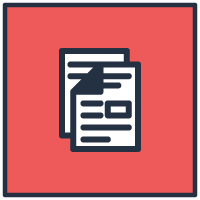Part B Information
This section includes data about IDEA Part B reported disability category, educational setting, and state assessments. As noted in the introduction to this report, there is a discrepancy between the number of children identified as deaf-blind in OSEP's annual count of students served under IDEA Part B and the National Deaf-Blind Child Count. In 2019, the most common disability categories reported in OSEP’s count for children included in the National Deaf-Blind Child Count were as follows: Multiple Disabilities (40.2%), Deaf-Blindness (17.2%), Hearing Impairment (9.5%), Other Health Impairment (6.3%), Visual Impairment (5.1%), and Intellectual Disability (5.1%). This distribution has remained essentially unchanged over the past five years.
The percentage of young children, aged 3 to 5, educated in regular early childhood education settings for some portion of the day was 34% in 2019. More than 60% of school-age children were being served at least a portion of their day in a regular classroom.
